7.6.4. Internet of Things - IoT |
 CISCO says in his brochure: Five Things to Know About Wi‑Fi 6 and 5G; Both Wi‑Fi 6 and 5G are built from the same foundation; They will co-exist and work better together to support different use cases; Wi‑Fi 6 will continue to be the access choice for indoor networks; 5G will be the designated choice for outdoor networks; Wi‑Fi 6 and 5G expand opportunities for digitization across all industries. Both Wi‑Fi 6 and 5G offer exciting opportunities to connect more mission critical IoT devices reliably via wireless. Wi‑Fi 6 and 5G will also offer enhanced mobile broadband for immersive experience via augmented and virtual reality. Wi‑Fi 6 and 5G introduce the new era of wireless access. Their convergence enables organizations to do business anywhere while increasing productivity and offering the best user experience.
CISCO says in his brochure: Five Things to Know About Wi‑Fi 6 and 5G; Both Wi‑Fi 6 and 5G are built from the same foundation; They will co-exist and work better together to support different use cases; Wi‑Fi 6 will continue to be the access choice for indoor networks; 5G will be the designated choice for outdoor networks; Wi‑Fi 6 and 5G expand opportunities for digitization across all industries. Both Wi‑Fi 6 and 5G offer exciting opportunities to connect more mission critical IoT devices reliably via wireless. Wi‑Fi 6 and 5G will also offer enhanced mobile broadband for immersive experience via augmented and virtual reality. Wi‑Fi 6 and 5G introduce the new era of wireless access. Their convergence enables organizations to do business anywhere while increasing productivity and offering the best user experience.
The logo at the beginning of the first paragraph is a creation from CISCO, one of the leading manufacturers of network equipment. My first home router (GATEWAY) would be theirs (Figure 4.4.100b). That was around year 2010. Ten years before that I used an 'Amiga 1200' with which I would occasionally connect with a modem borrowed from my company at a speed of about 5 kbps with some B.B.S. server. Much has changed fundamentally since the age described.
In general, the use of wireless communication with respect to these technologies would be used according to the following figure:

|
| Figure 7.6.71 Use of Wi‑Fi 6 and 5G depending on the circumstances. |
The basic element that devices must have to be an integral part of this technology is the sensor; a part of device that measures, processes and stores data. Depending on the purpose of the device, the sensor can be only one (such as for a gas detector) or more of them for different purposes. This is the first and basic condition. The second condition is that the device has a transceiver that will use the radio-waves to send data to the user or the user will read them. The user can order changes to the device if necessary. There does not necessarily have to be two-way communication, if the purpose is simple, for example, for the device to transmit data about its operating status and correctness.
There are two ways sensors in devices can be read. The first is that the device sensor sends data from a private Wi‑Fi network to the public server of the sensor manufacturer with a fixed public address, and the user reads data from a server that will deliver any new user orders to the sensor when the sensor reports to the server again. An important factor is the frequency of contact of the sensor to the server. Another way is that communication between sensors and users over short distances takes place within a private Wi‑Fi network, and for longer distances a 'bridge' is used between the public and private network provided by ISP equipment and a 5G gateway to allowed users to access the user's private Wi‑Fi network from the public network. By default, communication between the private and public network is only possible if the call was made to the public network from the private network, because the gateway does not allow 'intrusion' into the private network from the public network. Thus, 5G devices must allow the user to access his own private network over greater distances using a public network 'across' the bridge. Basically, the sensor considered in IoT, in contrast to the usual notion of a sensor, is a transceiver system that uses internet technology.
Thus, 5G devices with sensors, smartphones and network gateways are available. Currently, they are entering our daily lives with different features more and more, as the following set of Figures shows. It starts with the cheaper and simpler things that are already advertised in online stores.
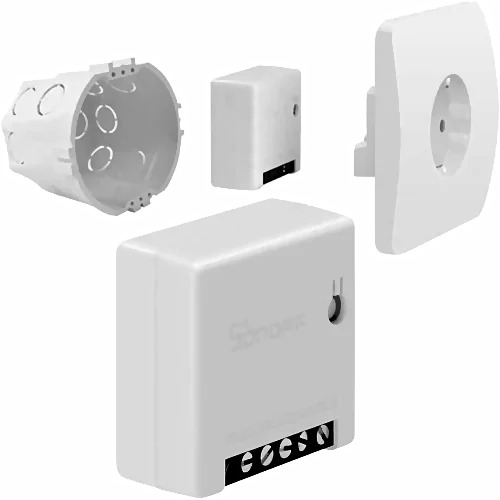
|
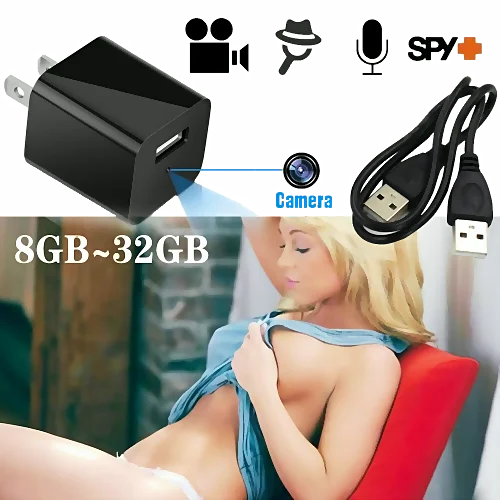
| |
| Figure** 7.6.72 Use of Wi‑Fi 6 in the household. | ( + / - ) | Figure** 7.6.73 What a woman can sell? |
Although it looks like a joke, it is not. Families who are in the process of decorating the house when buying everything they need, will get wall sockets and wall switches, light bulbs with dimmable lighting, and household appliances such as a stove, dishwasher, water heater, and other necessities. In this way, they will have control over the operation of all devices in the house. Regarding easy access to the devices, it is recommended to buy everything from the same manufacturer for unique software support. However, it will be a long time before older households reach this stage. And what about women? Has the advertisement shown a bait for a male customer, because with the image of a half-naked woman, the chances of selling the product increase? At which retailer will you buy the same product from even though they are in the same retail space. At women, of course, both men and women. The cult of the half-naked woman in terms of advertising and sales has developed to perfection. After all, women are prettier and more refined than men, which they both know well.
Now we have to wait for what products will be installed in cars, buses, trains, trucks, planes, kindergartens, schools, libraries, museums, hospitals and the like. I guess life with a smartphone will not be complicated to such an extent that we will have hundreds of programs installed on our smartphone for various purposes. The following Figure shows a device that is very often offered as a solution for a smart home. According to the description in the offer, the device monitors a couple of remote devices shown in the picture to the right of it. There is nothing on offer regarding vehicles, ovens, refrigerators, dishwashers or washing machines and the like, nor about a smart power switchboard. The solution that ISPs in Croatia (and some other countries) offer is very miserable.
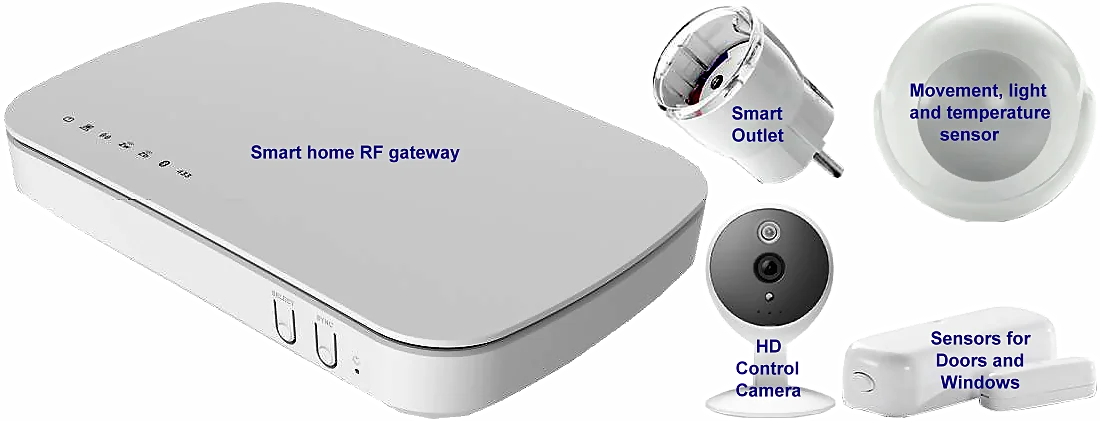
|
| Figure 7.6.74 Smart Home RF gateway and its peripheries. |
Features of this device are:
At first, all possible options both of devices aren't completely supported. It is very pathetic for ISPs that it mostly offers a device without a SIM card, which means that it is only available within the home Wi‑Fi environment via a mobile phone. Using a SIM card (Dual SIM mobile phones), you could call this device from a greater distance and access the control devices that are monitored through RF Gateway. Remote devices uses Z-Wave and ZigBee protocols (at application layer). Both Z-Wave and ZigBee use 128-bit encryption standard, the same encryption used by banks and government, which means that communication between devices is very well protected.
Z-Wave and is designed to achieve reliable communication and operation between devices and sensor-enabled objects from various manufacturers in the Z-Wave Alliance, which consists of over 700 members. Uses 900 MHz band. Zigbee wireless technology is developed as an open global standard to address the unique needs of low-cost, low-power wireless IoT networks. The Zigbee standard operates on the IEEE 802.15.4 physical radio specification and operates in bands of 2.4 GHz, 900 MHz and 868 MHz. A Z-Wave network is limited to 232 total devices. A ZigBee network theoretically could have some 65k devices connected to it. Both smart home device control protocols have certain advantages and disadvantages. It appears as though no one protocol has won the right to be called the standard. What a mass, two different networks in home environment. Two gatewayes for two different purpose? But is there anything better and different?

|
| Figure 7.6.75 Modern SOHO 5G device 'Fritz!Box'. |
Unlike many other smart home solutions, the Fritz!Box is equipped with only one wireless smart home standard: the energy-saving DECT-ULE standard, which uses a band from 1'880 to 1'900 MHz. This means that the smart home system is only compatible with devices that use this wireless standard. The Fritz!Box as a smart home control center fulfills the most important functions of a smart home, but (still) does not leave much room for maneuver as there is no compatibility with voice assistants such as Amazon Alexa, Google Home and Apple HomeKit. We'll see what happens in the future.
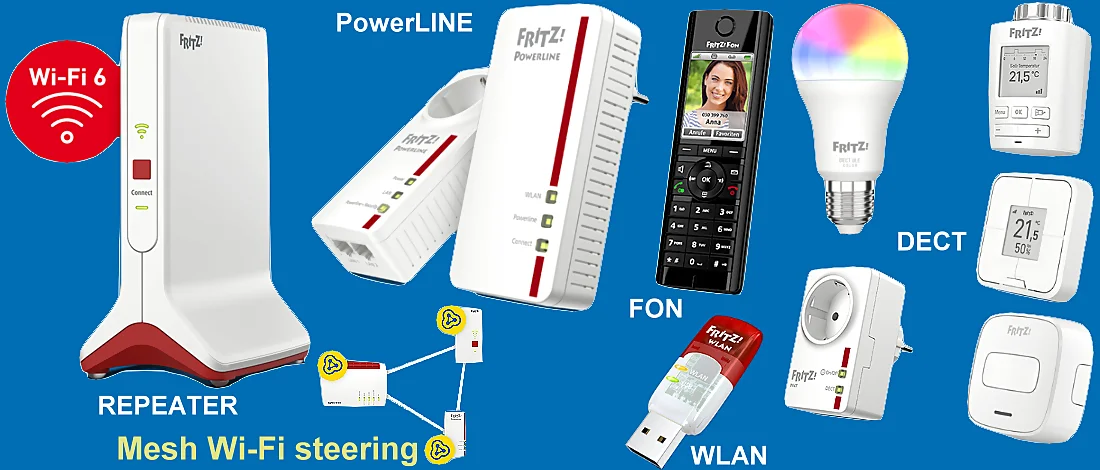
|
| Figure 7.6.76 Devices of 'Fritz!Box' system. |
FRITZ! has several products and when there are being used in the home network at the same time, Mesh Wi‑Fi steering automatically steers smartphones, tablets and other wireless devices to the wireless access point with the best Wi‑Fi reception and also to the most suitable frequency band.
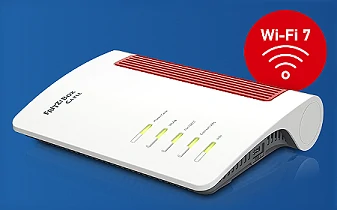 FRITZ! uses its own OS and has mobile applications for different purposes. It uses DECT-ULE capabilities, and can 'declare' your phone number as private, and create your own user account on the device. This makes it possible to enter your 'private network' from the outside and use the Wi‑Fi capabilities of the device.
FRITZ! uses its own OS and has mobile applications for different purposes. It uses DECT-ULE capabilities, and can 'declare' your phone number as private, and create your own user account on the device. This makes it possible to enter your 'private network' from the outside and use the Wi‑Fi capabilities of the device.
There are not many devices that use the advanced Wi‑Fi 7 concept, the basic and important feature of which is the use of BSS (Basic Service Set) which is basically an additional private network identifier that is different for each network and the gateway 'overhearing' Wi‑Fi traffic discards everything that does not belong to it to the network, the main feature of communication standard IEEE 802.11be.
The aforementioned enables the slow but safe introduction of IoT outside the home environment, especially in traffic. Since Wi‑Fi uses relatively high frequencies, the communication range is small and therefore oriented to the immediate environment. It cannot happen that a low-power Wi‑Fi device in a car or at a traffic light 'interferes' with another device a few hundred meters away. How long will it take to survive? Slow and quite long!
Wi‑Fi devices of the seventh generation are rare, but FRITZ! he used it with the built-in, already popular, ZigBee network that could theoretically have about 65'000 connected devices (FRITZ!Box 6670 Cable). In this way, with BSS and the ZigBee protocol, he prevented different private networks from 'seeing' each other and enabled safer control in the smart home. The above provides an acceptable basis for the use of Wi‑Fi regarding the creation of a smart city, as shown in the next set of images. With this device, the concept shown in Figure 7.6.74 goes down in history.

|
| Figure** 7.6.77 Smart City. ( + / - ) |
From the pictures shown, it is clear that the most painless, but not the most necessary, solution is equipment for a 'Smart house'. A 'Smart city' requires much more equipment in the form of various devices and their associated sensors. Places of installation of equipment are very diverse; from the antenna system on the skyscraper to light poles, traffic lights and many other different objects. And all this needs to be supervised by some kind of software support according to some work algorithm. In any case, everyone 'sees' everyone and they take care of each other. It will take a long time for the above to become a reality, and most likely the main initiator of everything will be the car industry.
SUMMARY:
 It is certain that the introduction of IoT in people's lives will bring about great changes that are shyly appearing so far. For example, smart light switches and dimmable luminaires exist, but cannot be found in all stores, especially if kitchen appliances are sent to them, which send the operating status to the user via new technologies, because they do not change so quickly with new and more advanced. This is valid for the SOHO environment, and outside of it, the introduction of innovations will be even slower. Therefore, this page will be 'under construction' for a long time to come. And she probably won't be the only one. There is still enough space on the server for the next chapters.
It is certain that the introduction of IoT in people's lives will bring about great changes that are shyly appearing so far. For example, smart light switches and dimmable luminaires exist, but cannot be found in all stores, especially if kitchen appliances are sent to them, which send the operating status to the user via new technologies, because they do not change so quickly with new and more advanced. This is valid for the SOHO environment, and outside of it, the introduction of innovations will be even slower. Therefore, this page will be 'under construction' for a long time to come. And she probably won't be the only one. There is still enough space on the server for the next chapters.
It was already mentioned before that the goal is for 'everyone to see everyone', but also to know who belongs to which network. It must not happen that a user from one network can 'manage' devices from another network. In the Wi‑Fi 7 system, a lot has already been done regarding the above, but obviously not to a sufficient extent, as the following picture shows. But it may be necessary that something must be signaled to the device from another network and that it recognize it and similar. It must not be like now that a neighbor can 'see' another neighbor's devices.
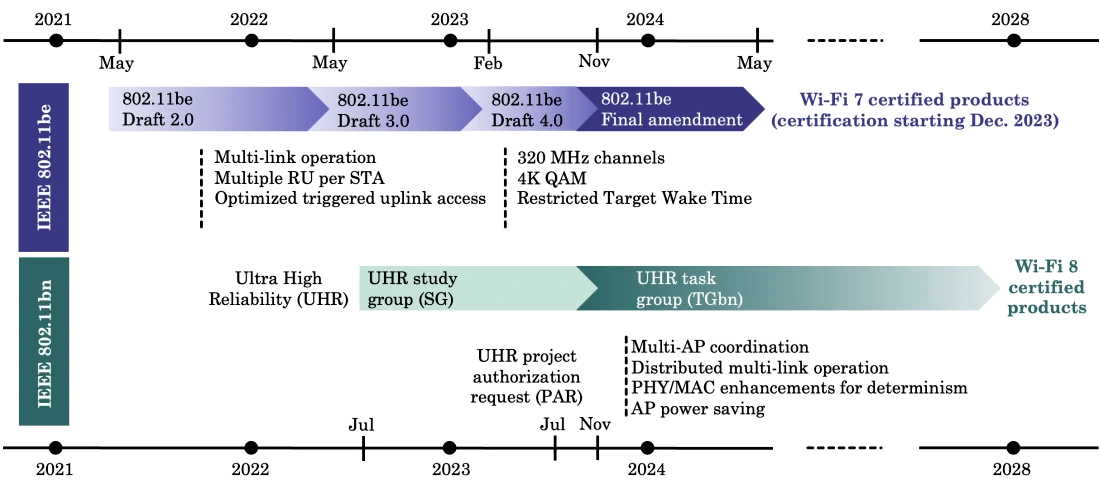
|
For the future, even stricter control between networks, higher communication speed, and more advanced reliability are foreseen. It is not easy to achieve these goals. Unreliability is the Achilles heel of any technology that should be affordable, ubiquitous, and operating in bands free from specific rights that would make them susceptible to uncontrolled interference. Wi‑Fi is no exception. It will not be easy to meet the stated basic criteria. Most likely, each network will have a unique identifier, similar to a MAC address. There are no two active network cards in the world with the same MAC address, unless it has been hacked.
|
Citing of this page: Radic, Drago. " Informatics Alphabet " Split-Croatia. {Date of access}; https://informatics.buzdo.com/file. Copyright © by Drago Radic. All rights reserved. | Disclaimer |